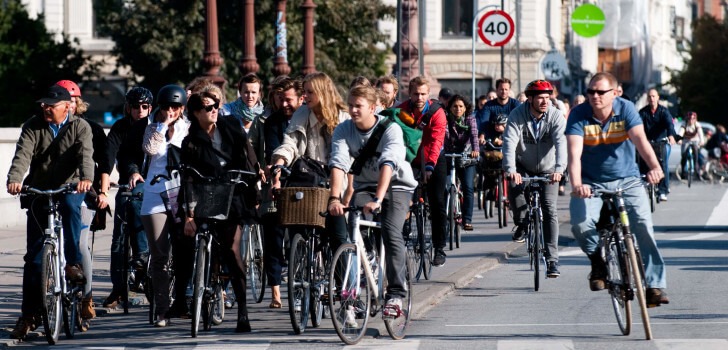Of all urban trips made in the U.S. only one percent is made by bike, according to a report issued by UC Davis and the Institute for Transportation and Development Policy. The rest of the world averages six percent of all urban trips by bike, with the stand out cycling countries being Denmark. Netherlands, Japan and China.
The report says the number of regular American cyclists is growing, but there would be large scale social impact, mainly positive, if that growth was more dramatic – both in the U.S. and around the world.
In monetary terms, the world would save $24 trillion over driving expenses, and trim 11 percent off current CO2 emissions. The report says to achieve those numbers by 2050, bikes and e-bikes would have to account for 14 percent of urban miles traveled. In the U.S., this would mean a trip share increase of seven percent, which matches the average share of the top five U.S. cycling cities: Berkeley, Boulder, Cambridge, Davis, and Eugene.
The report says this figure could only be achieved through a mix of safety and transit policy initiatives, combined with major infrastructure build-outs, with city and town planners needing to “create realistic mobility alternatives to cars.”
Although not every city can be like cycle crazy Amsterdam, more than half of all urban trips worldwide are about six miles, meaning they’re within reasonable cycling range.
The reports says, “Even in the United States more than 35 percent of trips are less than 5 kilometers, a distance typically covered in twenty minutes or less [by bike]. A number of such trips should be “cyclable” for many, or at least amenable to travel via e-bikes.”
Of course what makes a trip “cyclable” involves more than distance, as there needs to be well designed streets and bike lanes to give an an individual a sense of safety and comfort. The good news is that to boost cyclist numbers and achieve significant results in financial, environmental and health terms, the U.S. doesn’t need to start from scratch. Many cities already have the density to support much better infrastructure. In other words if you build the bike lanes, the cyclists will come.
